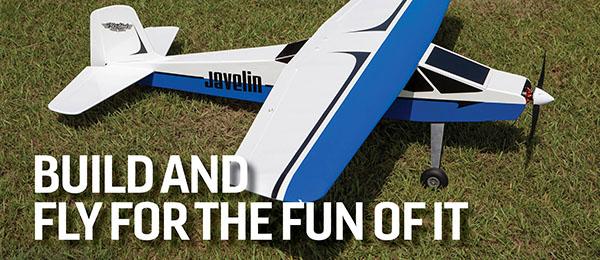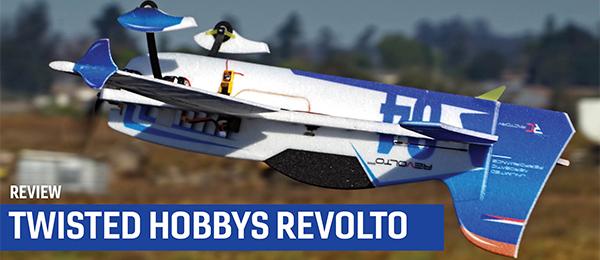Exploring asymmetry with an unconventional configuration Article, photos, and design by Terry Dunn Read the full article in the May 2014 issue of Model Aviation.I recently set out to expand my understanding of asymmetric aircraft. When I began this quest for knowledge, I had the classic examples of asymmetry in mind—namely the Blohm und Voss Bv 141 and Rutan Boomerang. Both of these designs are proven successes, yet their unconventional configurations make one question how they can even fly in a straight line. My breakthrough came when I realized that nearly all propeller-driven airplanes are asymmetric to some degree. With one or more propellers generating a spiraling slipstream, torque effects, gyroscopic forces, and sometimes uneven thrust (P-factor), it’s a wonder that any propeller-driven airplane can fly in a straight line! Yet, straight and level flight was mastered a long time ago. After I realized that asymmetry is the norm rather than the exception, my question changed from “How do asymmetric airplanes work?” to “How much asymmetry can be tolerated?” I started with one confidence-building asymmetric kitbash of a Flyzone Red Hawk (see “The Joy of Kitbashing” in the August 2012 MA). Next, I set out to design an asymmetric model that would appear radically unconventional, perhaps even unairworthy to some, yet would have stable and predictable flying traits. The Parallax is the result of these efforts. The Parallax is slightly more than a modern adaptation of the Bv 141. I make no claims that any aspect of the airplane’s performance is enhanced by its asymmetry. My position is that little is compromised despite its asymmetry. This airplane is the foam-and-LiPo embodiment of the notion that airplanes don’t necessarily have to look right to fly well.

The Parallax is built with Depron foam and requires no ribs. Here, the carbon-fiber spars are being glued into place before adding the top sheeting.

The all-foam airframe of the Parallax produces a lightweight and easily repairable structure. This unit is ready for a coat of paint and finish work.

This late 1930s-style Parallax is an example of how diverse themes can be achieved with subtle differences in shapes and colors. Note that the motor is on the right side, necessitating a reverse-rotation propeller.
You may not believe it until you see it, but the Parallax flies normally. As long as you’ve kept it light and stuck to the plans (or the allowed deviations), you should have a well-mannered sport airplane with aerobatic capability. My adventures with the Parallax have satisfied my intent to learn more about the intricacies of asymmetric airplanes. I have also realized that understanding and utilizing asymmetry opens countless new and exciting possibilities for unique designs. I am far from finished with this foray into a seemingly untapped genre. If you’d like to join me, I think you’ll agree that the Parallax is a good place to start. Read the entire build article and see more construction photos in the May 2014 issue of Model Aviation. -Terry Dunn
Construction and Flight Video
Order Terry Dunn's Parallax
Asymmetric park flyer by Terry Dunn spanning 32 inches. Plans cost $12.00 plus shipping and handling. Please allow at least one to three weeks for delivery within the United States—longer for overseas. All domestic plans are shipped rolled via priority mail. All foreign orders are folded and shipped First Class.










Comments
put a camera in the pod?
BV-141 was designed to give the observer an unobstructed view. Likewise Parallax looks to be an excellent camera platform.
How sensitive is it to the weight carried in the pod?
Re: Camera
You definitely could place a camera in the pod. Just keep in mind that you will need to put weight in the opposite wingtip to maintain lateral balance. As shown on the plans, the Parallax is not a big model. A keyfob camera may be the largest practical camera you can use without upsizing the model....maybe a mobius camera will work. If you try it, let us know how it works out.
Carbon Fiber Spar
Fascinating design look forward to constructing one of these. Was the wing spar imbedded in the foam wing or just glued to the bottom of the wing?
spar
As designed, the wing is built-up, not a flat plate. There are no ribs, just top and bottom sheeting that sandwiches the spar. The plans illustrate and explain the process. Also see the wing photo above. All that being said, I'm sure it would work with a flat plate wing as well. Just be sure it has good torsional stiffness. I'd use 6mm depron, doubled up from the leading edge to the spar (external on top or bottom), and single thickness behind the spar.
PArallax
What would you think about doubling the plan size as to size of motor, prop, and battery?
Big Parallax
I'm sure the plane will fly fine at double the size...and that's definitely something I'd like to see! As for power system, that's hard to answer until you know how much the airframe will weigh. My suggestion would be to go ahead and build it and then come up with a power system to give about 100 watts per pound of flying weight. I'm happy to provide recommendations once you get to that point.
another 60 inch advocate
I also am thinking of this as a building project. I am about 70 percent finished with the pt19
featured. Here also. My experience with enlarging the pt19 plans to a 60 inch version
has gone extremely well so far.
I am seriously thinking about doing the same thing with your design. It looks like a well thought
out design. I may not get to it until next winter, but am seriously thinking about it as a
second scratch built. I also build plastic aircraft as a hobby and am a fan of unusual german
aircraft from wwII. This would be a great 'what if' german aircraft project.
build pictures or video
Terry,
I love the looks of this plane. I purchased the plans although I've only built from kits in the past. Do you have additional pictures of the build that you would be willing to share? thanks,
Dave
more photos
There is a build thread on RC Groups that has photos of a Parallax coming together. The example in the thread deviates a little from the plans, so I'll contribute with photos of my own as well:
http://www.rcgroups.com/forums/showthread.php?t=2160082
There is one in every crowd
There is one in every crowd :)
the parralax
Good morning Mr. Dunn. I would love to have 5 min. Of your time to talk about the parralax. Could I call you.
Dale Bolen
Add new comment